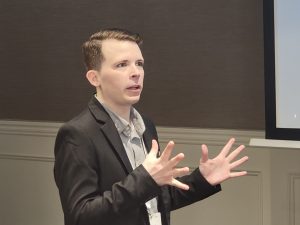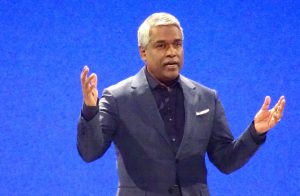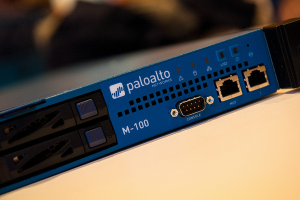Brocade Makes Bet on Management Simplicity, Ethernet Fabric Technology to Open Markets
Brocade is making a major bet on software-defined networking enablement, TRILL, and high-speed Ethernet to open the door to next-generation markets for virtualized, cloud systems, CEO Mike Klayko said in a webcast from the Cube at the Brocade Analyst Day over SiliconAngle.tv. With its new VDX 8770 switch, it has fixed the main problem users have had with Brocade’s new technology, scalability. Klayko believes that the new switch and vastly simplified network management built into Brocade’s 10 Gb Ethernet, fabric-enabled technology will open both the internal F2000 LAN and cloud service provider markets that total $30B to $50B.
“Every CIO is trying to turn his data center into an internal service provider, and every service provider is trying to a data center,” Klayko said. To do that and to cope with the huge growth in data overall while dealing with the fast evolution at the virtualization, application, and cloud management layers, CIOs need to eliminate the constant distractions created by complex management at the underlying, physical layer.
“One design point I have the engineers is that the network fabric has to be self-healing, self-discovery, self-managing,” Klayko said. “And you need new standards. We went with TRILL because spanning tree is inherently inefficient.”
Brocade succeeded in those goals according to early adapters. In a Peer Incite meeting on August 7, for instance, the Wikibon community heard from Luke Norris, CTO of IaaS provider Peak Colo, which moved to Brocade 10Gb Ethernet to support its high growth. Norris said that with Brocade and TRILL adding new switches is plug-and-play with no interruption of network operations or complex reconfiguration, a far cry from the spanning tree experience. The network simply identifies and incorporates the new switch on the fly.
Klayko said that assembling a fabric is so simple that grade school children literally do it in about 120 seconds. Specifically, he referred to what Brocade calls the “Mod Squad”, 4th-12th grade students who come into Brocade’s office under an innovative cooperative learning program to get hands-on experience in data networking.
Brocade has an aggressive growth growth strategy. Today it is the dominant player with about 70% of the $3B Fibre Channel SAN market. Despite analyst talk about that facing replacement with 10Gb Ethernet, “that market is not going anywhere for at least a decade,” Klayko says. Actually, it is growing at about 3% per year.
But the real growth are in the order-of-magnitude larger enterprise LAN and cloud service provider markets. “If we can get just a small faction of those, we will have tremendous growth,” he says.
Brocade’s early gamble on Ethernet fabric architecture is beginning to pay off there, he said, with growing interest from users.
“We were oversubscribed on the first day that we opened our beta test program,” he said. “And the nearly universal response when we asked them if they would buy Brocade after the end of the beta test was, ‘When can we get more?’ When we came out with a beta of a 100 Gb switch one user asked if he can put 10 of those links together to get a Tb. That’s a pretty good indication that the demand is out there.”
Two major trends are deriving that trend. First, data is growing at an astronomical pace. One Brocade client is doing human genome research with trillions of bytes of data. “You couldn’t move those [data sets] around on a network. Now they are using them to research things like possible cures for cancer.”
The other is the rapid evolution of the three layers that run on top of the physical network. Startups like Nicira, recently acquired by VMware, are driving network virtualization. Above that, the application layer is also evolving in response to virtualization. And above that companies are building their own cloud computing layers to support their users.
“Looking at it from the CIO perspective, they want to change, to absorb all these new technologies, at the rate they can support. They can’t rip everything they have out. They need to support their businesses,” Klayko says. “We provide the fundamental physical networking level that is not going away. Our technology is designed to let CIOs build at their own pace.”
A message from John Furrier, co-founder of SiliconANGLE:
Your vote of support is important to us and it helps us keep the content FREE.
One click below supports our mission to provide free, deep, and relevant content.
Join our community on YouTube
Join the community that includes more than 15,000 #CubeAlumni experts, including Amazon.com CEO Andy Jassy, Dell Technologies founder and CEO Michael Dell, Intel CEO Pat Gelsinger, and many more luminaries and experts.
THANK YOU













